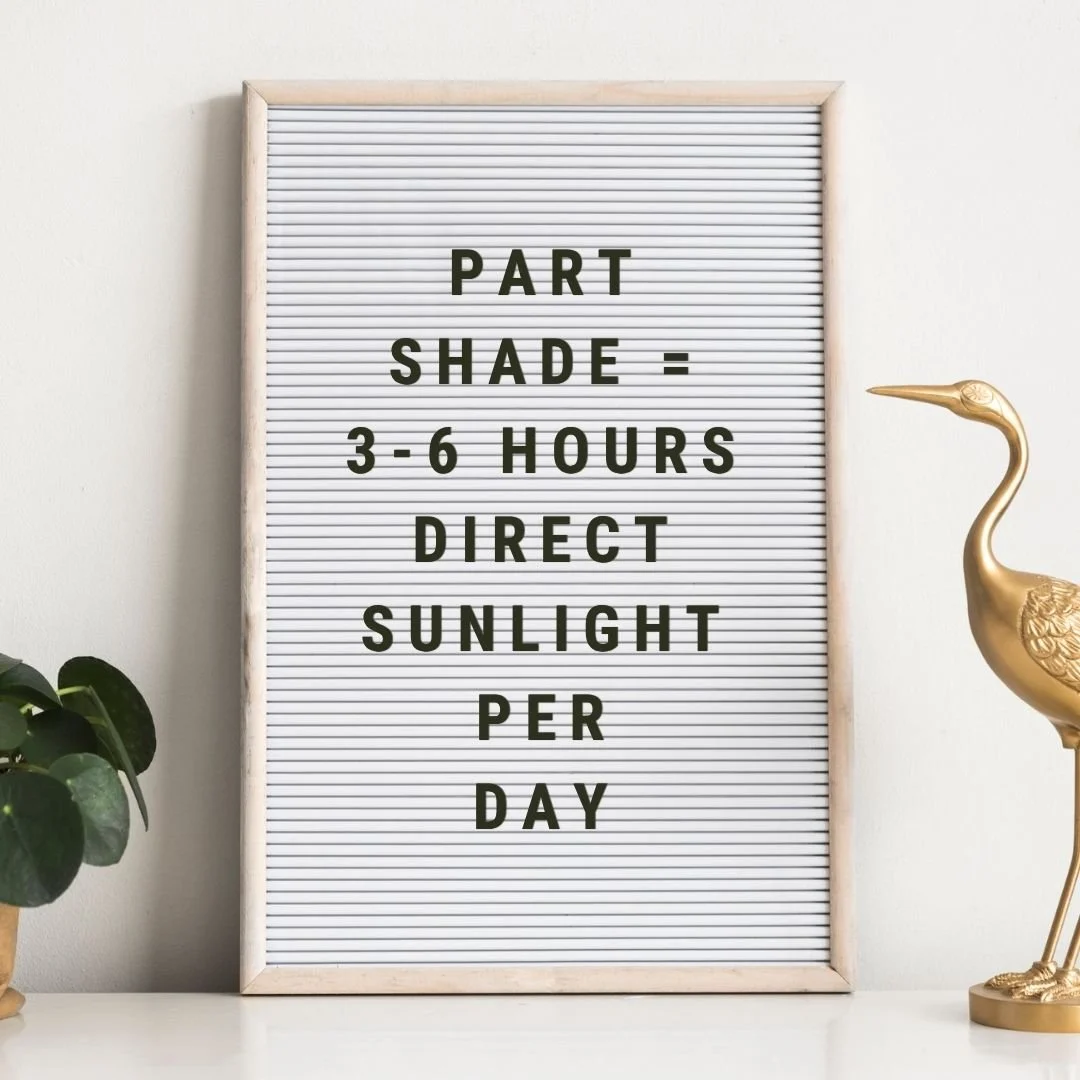Part Shade Definition: What Does Part Shade Mean?
Learn the meaning of part shade and how to measure the light levels in your landscape.
When it comes to gardening and landscaping, understanding light requirements is crucial for the health and vitality of your plants.
One of the most common phrases you'll encounter in plant care is part shade. But what does this phrase really mean, and how can it impact your gardening choices?
Let’s take a deeper look at the definition of part shade (also called partial shade), and explore practical tips for measuring the amount of sunlight and shade in your garden.
Whether you're a seasoned gardener or just starting out, this article will help you to create a thriving outdoor space and choose the right plants for your garden.
Part Shade Definition
Part shade is defined as 3-6 hours of direct sunlight per day. These hours don’t have to be consecutive, so your plant could get 2 hours of morning sun and one in the afternoon, and that would still count as part shade.
Gardening terms can be a bit inconsistent, and the meaning of "part shade" often varies depending on where you look.
Some sources classify part shade as 4-6 hours of direct sunlight per day; I’m going with 3-6 hours because that’s what I learned as a master gardener, and based on my experience 3-6 hours of sunlight is sufficient for plants that like part shade.
It’s easy to assume that an area of your garden gets part shade, especially if it seems bright and open in the morning and shady in the afternoon.
However, sunlight levels can be very deceptive, with amounts varying throughout the day and across the seasons.
To ensure your plants thrive, it's essential to measure the actual amount of sunlight hitting the landscape.
Keep reading to learn how simple it is to assess your garden's light conditions.
How to Measure Part Shade
Measuring the light in your garden isn’t as complicated as it might sound. You don’t need any fancy equipment, just a bit of time and attention.
Keep in mind that trees will leaf out from spring through fall and cast shade underneath, and there will also be extended daylight hours during the late spring and summer months.
Here’s a simple way to measure:
Pick a spot: Choose the area in your garden, yard, deck, or balcony where you want to measure the sunlight. You can use sticks or garden stakes to mark the area, if desired.
Observe the sunlight: Check how much direct sunlight the spot gets throughout the day. Start from when the sun rises and note what time the area gets sunlight and what time it becomes shaded. Count dappled shade as part of your shade tally (dappled shade is the speckled, changing light that filters through a tree canopy).
Track the hours: Tally up how many hours the spot is in full, direct sunlight. If it adds up to 3-6 hours, you’ve got a spot that meets the definition part shade.
Devices like sunlight meters aren't necessary, and can even be inaccurate due to factors like weather conditions and nearby reflective surfaces.
If you want to use tech to help you visualize where and when the sun will hit specific areas of the garden, the Sun Seeker app can be helpful, and it’s fun to play around with.
But really, you don’t need anything fancy to measure light levels. By simply observing your garden over the course of a day, you will gain a better understanding of the unique light conditions in your landscape.
Part Shade vs Part Sun
You may come across the term part sun and wonder if it means the same thing as part shade. Gardening terminology can be inconsistent, and the definition of part shade vs. part sun can differ depending on the source.
Some consider part shade and part sun to be the same thing (3-6 hours of direct sunlight per day).
Others define part shade as 3-6 hours of direct sunlight per day with mostly soft morning sun, and part sun as 3-6 hours of direct sunlight per day with mostly intense afternoon sun.
Many plants labeled as preferring part sun need more energy to grow flowers. These plants will produce more abundant quantities of blooms when they receive the strongest direct rays of the afternoon sunlight.
Does the Time of Day Matter?
Some part shade plants will do better with afternoon shade, particularly in warmer climates where the afternoon sun is harsh. Afternoon shade helps to protect these plants from excessive heat and stress and allows them to conserve moisture and energy.
Some examples of plants that like afternoon shade are:
Azaleas
Bottlebrush Buckeye (Aesculus parviflora)
Boxwoods (Buxus)
Bigleaf Hydrangeas (Hydrangea macrophylla)
Japanese Camellias (Camellia japonica)
Japanese Andromeda (Pieris japonica)
Oakleaf Hydrangeas (Hydrangea quercifolia)
Smooth Hydrangeas (Hydrangea arborescens)
What is Direct Sun?
Direct sun refers to the quality of light a plant receives. Direct sun is an intense, uninterrupted path of sunlight traveling directly from the sun to the plant, without any obstructions or filters.
Part shade refers to the quantity of direct sunlight a plant receives. Part shade is 3 or more hours of direct sunlight per day.
While direct sun describes the quality of light a plant receives, part shade measures the quantity of direct sunlight a plant receives over the course of a day.

